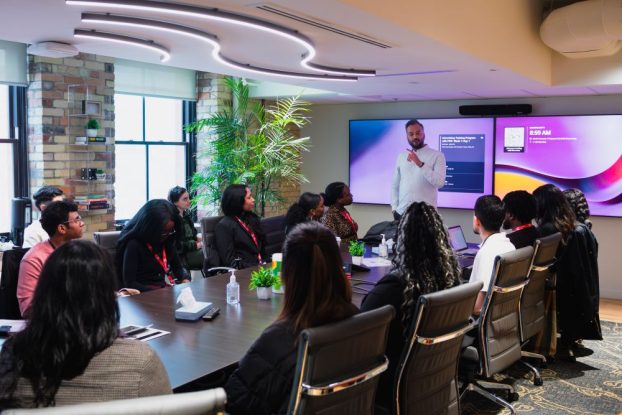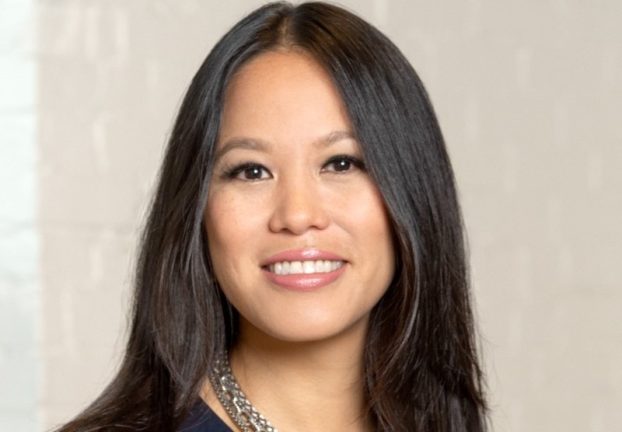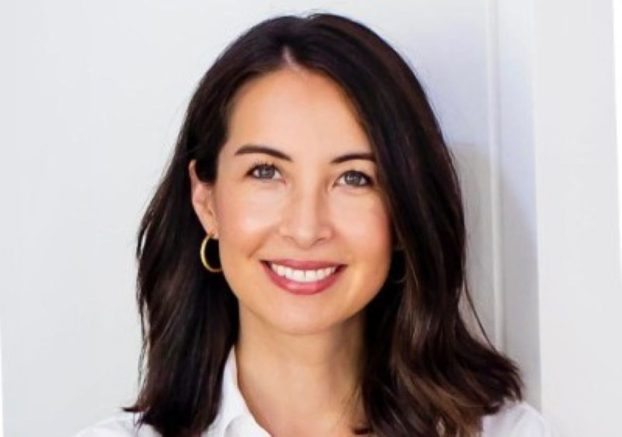[This article appeared in a supplement sponsored by Roche Macaulay & Partners.]
When the people at Harry Rosen’s advertising agency of 35 years announced that they were retiring, it fell on Mary Pompili – the manager of advertising and sales promotion at the Toronto-based chain of men’s upscale clothing stores – to find a new agency.
She knew this was an opportunity to update the Harry Rosen image, to appeal to a younger crowd. And the agency she chose to do the job was Roche Macaulay & Partners.
‘I’ve been a fan of their work for a long time,’ Pompili admits. ‘The work they did for ikea really stood out in my mind, but when I met with them I was most impressed at how consistently great their work is. To have that kind of track record is just wonderful.
‘I also really liked their innovative and effective use of different kinds of media. We use a lot of newspaper ads, and they seem to excel at putting together creative that really stands out,’ says Pompili.
‘But most of all, I was impressed with the importance they place on strategy. To my mind, it’s not enough for an agency to do great creative if they don’t understand the goals behind the business. With their decentralized, hands-on structure, they are able to work with us very closely on a consistent advertising strategy.’
Roche Macaulay & Partners’ decentralized, hands-on structure has been getting a lot of attention lately, and with good reason.
With no account executives, no receptionist, and a structure so flat that no memos have ever been written, it presents an anomalous image to the country’s more traditional advertising agencies.
The structure has even sparked attention in the United States.
When the news magazine Adweek did an article about the dwindling role of account executives, it cited Roche Macaulay & Partners’ unique structure as a trend for the future.
Following that article, Geoffrey Roche, the agency’s president and creative director, was invited to discuss the structure of the agency at several u.s. conferences, most recently in Colorado.
‘Part of what makes our structure unique is that we always try to go beyond the traditional,’ Roche explains. ‘We truly believe that our organization makes more efficient use of time, and of our clients’ money.’
Andy Macaulay, the agency’s senior vice-president of strategic planning, agrees.
‘The structure sometimes makes it tough to convince our clients that they will have the care and attention and responsiveness that they perhaps expect from more traditional structures, where an account manager is constantly at their beck and call,’ Macaulay says.
‘But with our structure, the client gets four people instead of one – a project manager, a strategic planner, a writer and an art director.
‘You have to understand that most major companies have themselves been through tremendous restructuring and de-layering in recent years, so today they’re after results and responsiveness rather than a hierarchical structure.’
His words resonate with truth.
After only five years in the business, Roche Macaulay & Partners has grown from a small agency with one account to an agency with 34 employees and $52 mil
lion in billings.
Its clients are diverse, ranging from ikea, to Petro-Canada, to the Canadian Egg Marketing Agency.
It appears to have successfully built business for each of its clients: it won the Cassie Award for advertising effectiveness on behalf of the Royal Ontario Museum; increased visitorship and sales for ikea; and successfully launched several new products for Petro-Canada, just to name a few.
As part of its strategy to cultivate the untraditional, Roche Macaulay & Partners has shied away from adopting a rigid hiring process.
Instead, the agency has made it a business practice to hire the best mix of senior and junior talent it can find, while insisting that the thinking of young people cannot be dismissed simply because they haven’t been in the business as long as
others.
‘There are places where experience counts, but there are also a whole lot of places that, with the proper guidance of senior people, there’s bright thinking that happens based on sheer will and enthusiasm,’ Roche says.
The agency has built much of its reputation on this ability to spot talent: Rather than hiring young people based on what they’ve accomplished, it hires them based on what it believes they have the potential to do.
This strategy has won Roche Macaulay & Partners more awards than virtually any agency in the business, including Strategy magazine’s Agency of the Year award in 1993.
As well, the agency had seven pieces of work published in this year’s Communication Arts advertising annual. Organizers received some 11,816 entries, of which only 309 were accepted for publication.
Not only did the ads represent a range of the agency’s work, for different clients and in different media, but the large number of entries included is a record for a Canadian agency.
The winning work includes a poster campaign for Maple Leaf extra long hot dogs; a newspaper ad for Toronto Star classifieds; three single transit entries for the Toronto Argonauts; a TransAd poster; and an ikea tv spot.
Most recently, the agency’s Panasonic ‘security camera’ newspaper ad won a Gold Pencil award at the One Show, one of the most respected and competitive award shows in the world.
‘For us, the awards represent the contributions of our people,’ Macaulay says.
‘Our writers and art directors and planners are the ones who really deserve the credit for creating the type of advertising that sells our clients’ products and services.’
Of course, the awards are merely a public pat on the back to congratulate the agency for a job well done.
A truer test of Roche Macaulay & Partners’ creative talent, however, can be found in its approach to meeting client expectations.
‘I believe that if we take on a piece of business, it is our job to make that client’s business more successful, to have more people walk through their door or buy their services, or whatever it might be,’ Roche says.
As proof of that statement, it’s interesting to note that, unlike many other agencies, Roche Macaulay & Partners has made it a point to work with only those clients who can truly benefit from their background and expertise.
In keeping with that philosophy, the agency has resigned some accounts over the years, including Sleeman Brewing & Malting and Maple Leaf Foods.
And that’s not including the accounts they say they’ve turned down entirely.
‘If we’re giving advice to our clients and they’re ignoring it, then we’re not adding value to their business,’ Macaulay explains.
‘We love opinionated clients. The best clients we have push us like hell, and we push back, and the result is often the best solution.
‘But if you’ve got a relationship where one side isn’t listening to the other, there’s no opportunity for that value to be transferred. So it doesn’t make any sense to have us as your agency, or for us to have them as our client.’
Of course, there still remain obstacles to overcome.
There has been some debate as to whether Roche Macaulay & Partners is in a position to continue growing, both regionally and internationally.
Because of its structure and its philosophy, it has chosen not to take on more than one big account at a time.
To manage the impact of new business on its structure, the agency generally accepts new clients very slowly and carefully, digesting the business before looking for its next client.
Similarly, the relative youth of its employees has been both a blessing and a curse.
While Roche Macaulay & Partners takes the time to cultivate young talent, its competitors often attract that same talent away with promises of higher salaries.
‘We bring in young talent because they’re good,’ Macaulay says, ‘and they’re good, so they grow.
‘Once they grow, they get a reputation, and they attract the attention of other agencies who may have deep pockets. Those agencies come along, and throw some money at them, and yeah – we lose some people.
‘Do we resent it? Yeah. We wish our competitors were also taking the time to focus on growing young talent as well.
‘But at the end of the day, it’s not a business strategy we intend to change, because there are still a lot of talented people out there who still haven’t gotten a break, and because it works so well for our clients.’
And, in typical fashion, Roche Macaulay & Partners points out the silver lining in every cloud, asserting that its flat structure is an advantage in its quest to continue doing business internationally, as evidenced by its international work for accounts like SoftArc and ikea in the u.s. and overseas.
‘What works here will work anywhere,’ insists Ed Roncarelli, the agency’s financial guru and senior consultant.
‘A flat structure will not hinder us from working internationally. By building this agency in the ’90s, we’ve been able to stay nimble. What I don’t envy are more traditional agencies who have to morph from a very structured, very layered structure to create a more responsive agency.’
Roncarelli should know.
A 25 year veteran of the business, he rose through the ranks of Norman Craig and Kummel (nck) to become its Canadian president, before becoming chairman of the nck organization in New York.
After nck merged with Foote, Cone and Belding in the u.s., Roncarelli became president of one of fcb’s u.s. divisions as well as chairman of FCB Canada.
He met Geoffrey Roche years earlier, when Roncarelli hired Roche to work as a creative director at fcb.
When Roche started up his agency in 1991, he approached Roncarelli to oversee finances as his senior consultant.
Today, Roche credits him with being responsible for 50% of the agency’s success.
Roche and Macaulay have themselves come a long way from their humble origins as the sons of a Zippo lighter salesman and a car dealer, respectively.
Yet, after making names for themselves within the advertising world, and slogging tirelessly to build their agency from scratch, they are proud at what they have been able to accomplish for their clients.
They are not the only ones.
David Kincaid, director of marketing at Labatt Breweries, worked with both Roche and Macaulay when they were at different agencies in the past.
‘If there’s any role model for agencies that want to get started, Roche Macaulay is a pretty good example,’ Kincaid says.
‘Geoff has a highly creative mind with an appreciation for business, while Andy has a very business-like mind with a great understanding for creative.
‘The way they’ve organized themselves lets them complement each other beautifully, with creative mastery. They aren’t handcuffed by any overriding advertising or strategic doctrine. For the right clients, that freshness is very invigorating.’
Even competitors agree.
Vaughn Whelan, of Vaughn Whelan & Partners Advertising, says: ‘Roche Macaulay has done as much or more than anybody to redefine the way that clients can work with advertising resources.
‘Clients’ expectations of big agency style, service and outputs has been altered considerably by Roche Macaulay’s success. And they truly deserve their success.’
Thanks to their ability to stay focused on creative and strategy, despite their tremendous growth, their clients also agree.























